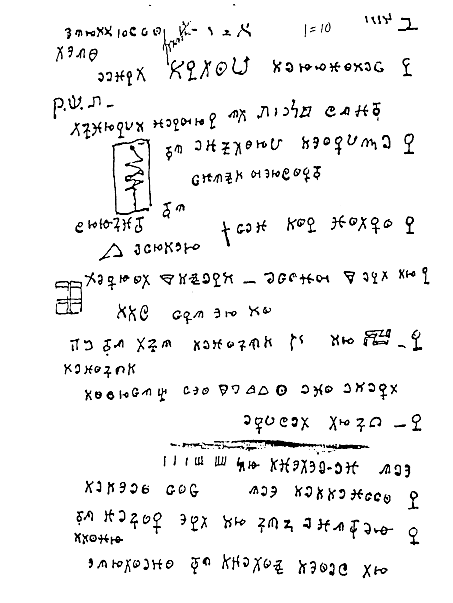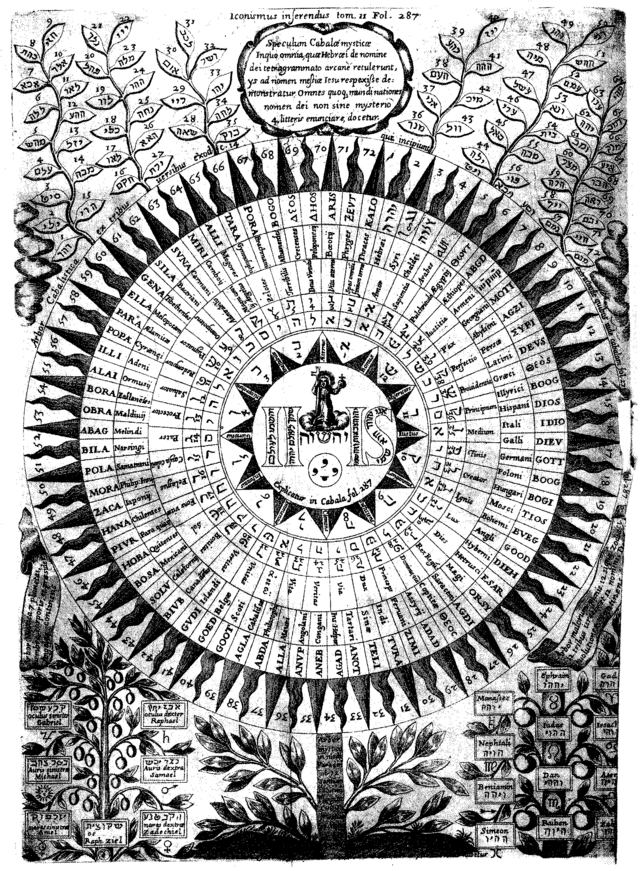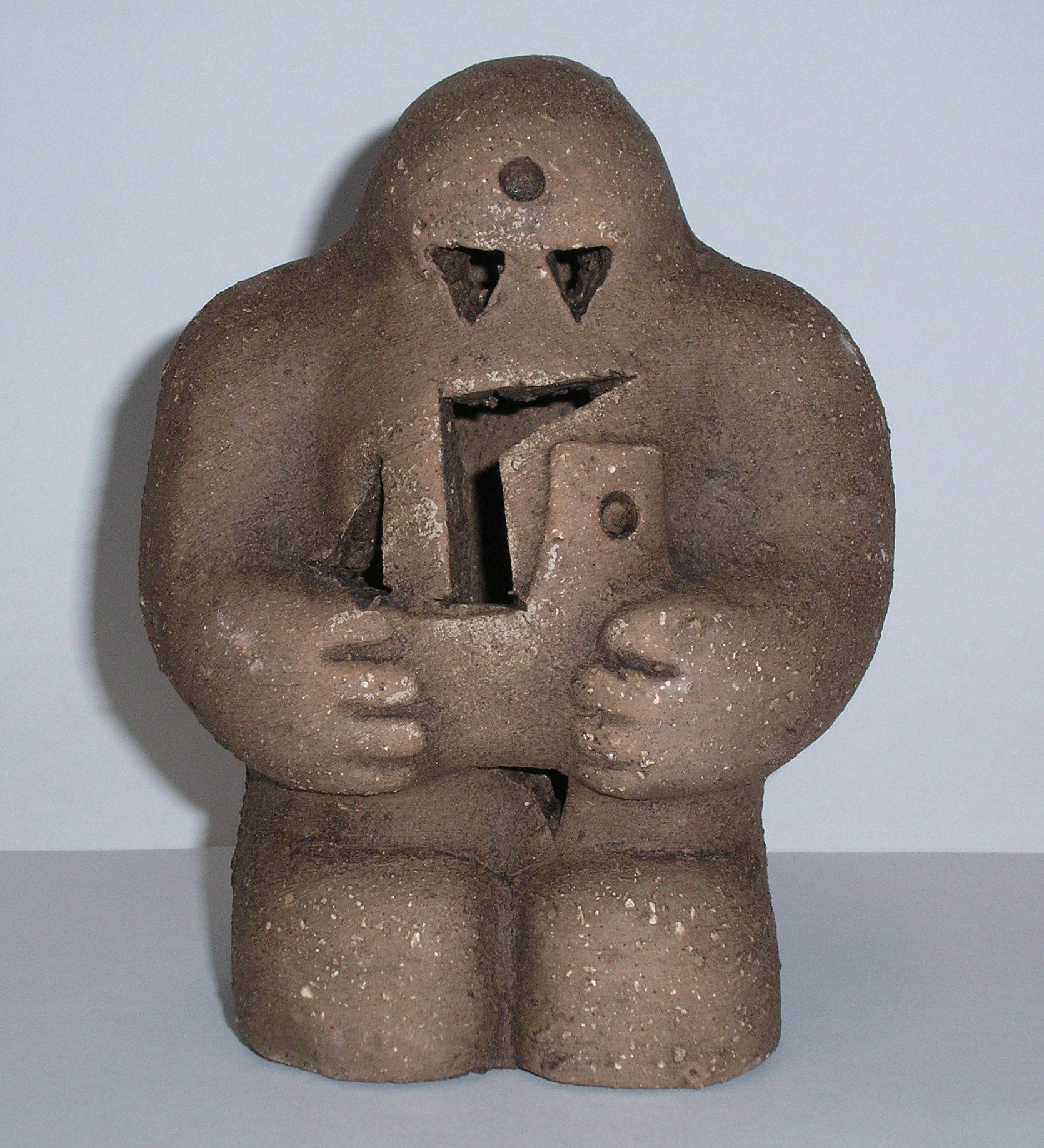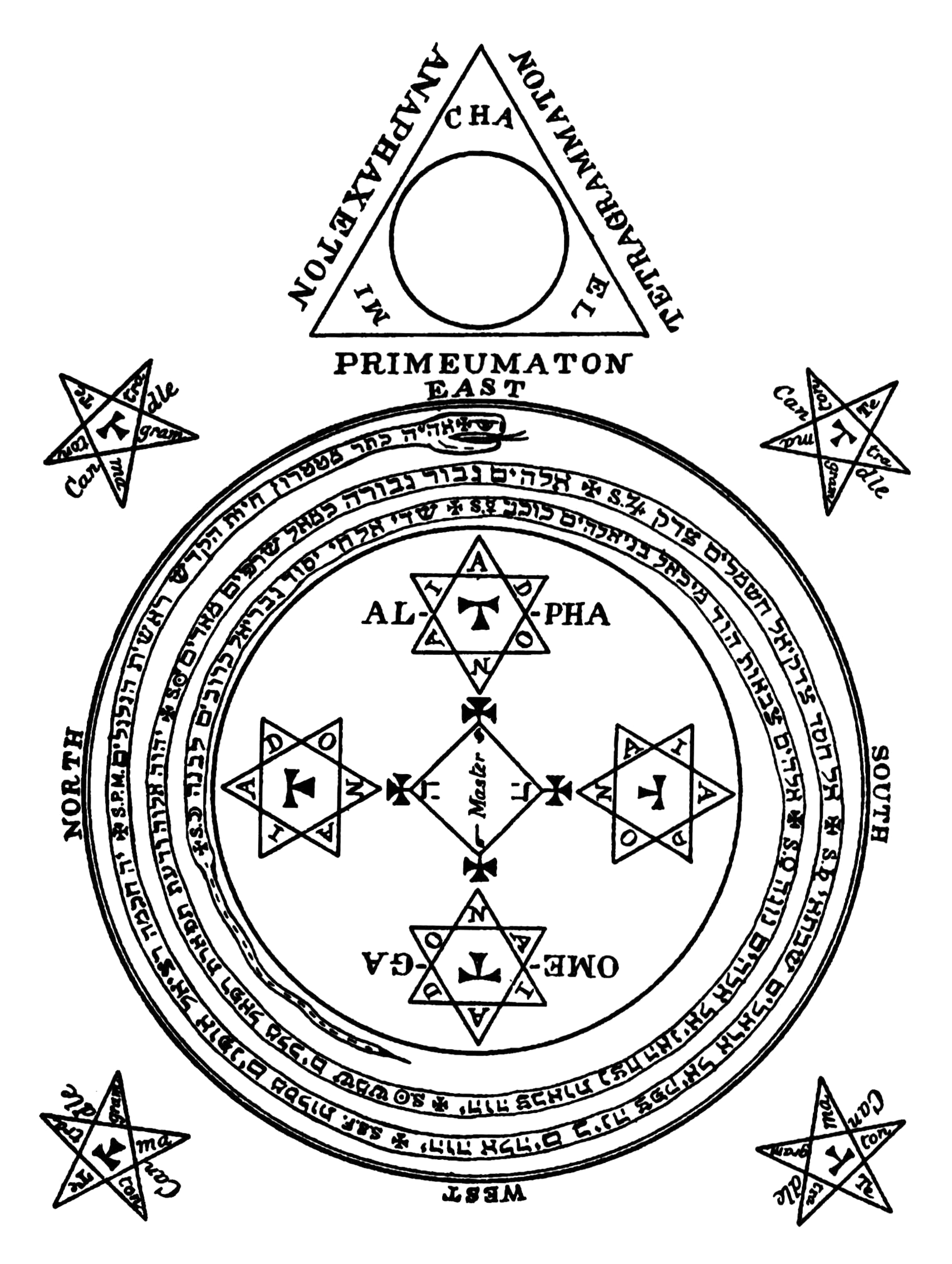|
Enochian Magic
Enochian magic is a system of ceremonial magic based on the 16th-century writings of John Dee and Edward Kelley, who wrote that their information, including the revealed Enochian language, was delivered to them directly by various angels. Dee's journals contain the record of these workings, the Enochian script, and the tables of correspondences used in Enochian magic. Dee and Kelley believed their visions gave them access to secrets contained within the '' Book of Enoch''. Enochian magic involves the evocation and commanding of various spirits. History Origins and manuscript sources Additional contributions to the study of Enochian magic were made by Thomas Rudd (1583?–1656), Elias Ashmole (1617–1692), Samuel Liddell MacGregor Mathers (1854–1918), William Wynn Westcott (1848–1925), Aleister Crowley (1875–1947), and Israel Regardie (1907–1985). The Five Books of Mystery This manuscript, Sloan 3188, is an account of the 'actions' or workings undertaken in the ''Liber ... [...More Info...] [...Related Items...] OR: [Wikipedia] [Google] [Baidu] |
Meric Casaubon
Meric or Méric or Meriç may refer to: Méric * Méric Casaubon (1599–1671), French-English classical scholar Meriç Places and geography * Meriç (river), Turkish name for the Maritsa which runs through the Balkans * Meriç, the Turkish name of Mora, Cyprus, a town in Northern Cyprus * Meriç, Edirne, a town and district of Edirne Province, Turkey People * Meriç Banu Yenal (born 1988), Turkish female basketball player * Meriç Yurdatapan (born 1972), German-Turkish female jazz singer * Hurşut Meriç Hurşut Meriç (born 31 July 1983) is a Dutch professional footballer who last played for Turkish club Cizrespor. Meriç plays primarily as a left winger. Career Born in Amsterdam, Meriç has played for Türkiyemspor, ADO Den Haag, Gençlerbi ... (born 1983), Dutch-Turkish male footballer See also * Maritsa (other) {{disambiguation ... [...More Info...] [...Related Items...] OR: [Wikipedia] [Google] [Baidu] |
Hermetic Order Of The Golden Dawn
The Hermetic Order of the Golden Dawn ( la, Ordo Hermeticus Aurorae Aureae), more commonly the Golden Dawn (), was a secret society devoted to the study and practice of occult Hermeticism and metaphysics during the late 19th and early 20th centuries. Known as a magical order, the Hermetic Order of the Golden Dawn was active in Great Britain and focused its practices on theurgy and spiritual development. Many present-day concepts of ritual and magic that are at the centre of contemporary traditions, such as Wicca and Thelema, were inspired by the Golden Dawn, which became one of the largest single influences on 20th-century Western occultism. The three founders, William Robert Woodman, William Wynn Westcott and Samuel Liddell Mathers, were Freemasons. Westcott appears to have been the initial driving force behind the establishment of the Golden Dawn. The Golden Dawn system was based on hierarchy and initiation, similar to Masonic lodges; however, women were admitted on an equ ... [...More Info...] [...Related Items...] OR: [Wikipedia] [Google] [Baidu] |
Names Of God
There are various names of God, many of which enumerate the various qualities of a Supreme Being. The English word ''god'' (and its equivalent in other languages) is used by multiple religions as a noun to refer to different deities, or specifically to the Supreme Being, as denoted in English by the capitalized and uncapitalized terms ''God'' and ''god''. Ancient cognate equivalents for the biblical Hebrew '' Elohim'', one of the most common names of God in the Bible, include proto-Semitic '' El'', biblical Aramaic '' Elah'', and Arabic '' 'ilah''. The personal or proper name for God in many of these languages may either be distinguished from such attributes, or homonymic. For example, in Judaism the tetragrammaton is sometimes related to the ancient Hebrew ''Names of God in Judaism#Ehyeh asher ehyeh, ehyeh'' ("I Am that I Am, I will be"). In the Hebrew Bible (), Yahweh, YHWH, the personal name of God, is Theophany#Judaism, revealed directly to Moses. Correlation between vario ... [...More Info...] [...Related Items...] OR: [Wikipedia] [Google] [Baidu] |
Golem
A golem ( ; he, , gōlem) is an animated, anthropomorphic being in Jewish folklore, which is entirely created from inanimate matter (usually clay or mud). The most famous golem narrative involves Judah Loew ben Bezalel, the late 16th-century rabbi of Prague. According to '' Moment'' magazine, "the golem is a highly mutable metaphor with seemingly limitless symbolism. It can be a victim or villain, Jew or non-Jew, man or woman—or sometimes both. Over the centuries, it has been used to connote war, community, isolation, hope, and despair."Cooper, MarilynJewish Word , Golem" '' Moment''. 17 July 2017. 24 August 2017. Etymology The word ''golem'' occurs once in the Bible in Psalm 139:16, which uses the word (; my golem), that means "my light form", "raw" material, connoting the unfinished human being before God's eyes. The Mishnah uses the term for an uncultivated person: "Seven characteristics are in an uncultivated person, and seven in a learned one", () (Pirkei Avot 5:7 ... [...More Info...] [...Related Items...] OR: [Wikipedia] [Google] [Baidu] |
Topaz
Topaz is a silicate mineral of aluminium and fluorine with the chemical formula Al Si O( F, OH). It is used as a gemstone in jewelry and other adornments. Common topaz in its natural state is colorless, though trace element impurities can make it pale blue or golden brown to yellow orange. Topaz is often treated with heat or radiation to make it a deep blue, reddish-orange, pale green, pink, or purple. Although it is often associated with golden yellow and blue, it comes in a variety of colors, including colorless. The rarest are natural pinks, reds, and delicate golden oranges, sometimes with pink hues. Topaz is a nesosilicate mineral. It is one of the hardest naturally occurring minerals and has a relatively low index of refraction. It occurs in many places in the world. Etymology The name "topaz" is usually believed to be derived (via Old French: Topace and Latin: Topazus) from the Greek ''Τοπάζιος'' (Topázios) or ''Τοπάζιον'' (Topázion), from Τοπα� ... [...More Info...] [...Related Items...] OR: [Wikipedia] [Google] [Baidu] |
Obsidian
Obsidian () is a naturally occurring volcanic glass formed when lava extrusive rock, extruded from a volcano cools rapidly with minimal crystal growth. It is an igneous rock. Obsidian is produced from felsic lava, rich in the lighter elements such as silicon, oxygen, aluminium, sodium, and potassium. It is commonly found within the margins of rhyolite, rhyolitic lava flows known as obsidian flows. These flows have a high content of silicon dioxide, silica, granting them a high viscosity. The high viscosity inhibits atomic diffusion, diffusion of atoms through the lava, which inhibits the first step (nucleation) in the formation of mineral crystals. Together with rapid cooling, this results in a natural glass forming from the lava. Obsidian is hard, Brittleness, brittle, and amorphous; it therefore Fracture (mineralogy)#Conchoidal fracture, fractures with sharp edges. In the past, it was used to manufacture cutting and piercing tools, and it has been used experimentally as surgic ... [...More Info...] [...Related Items...] OR: [Wikipedia] [Google] [Baidu] |
Scrying
Scrying, also known by various names such as "seeing" or "peeping", is the practice of looking into a suitable medium in the hope of detecting significant messages or visions. The objective might be personal guidance, prophecy, revelation, or inspiration, but down the ages, scrying in various forms also has been a means of divination or fortune-telling. It remains popular in occult circles, discussed in many media, both modern and centuries old. Definitions and terminology There is no definitive distinction between scrying and other aids to clairvoyance, augury, or divination, but roughly speaking, scrying depends on fancied impressions of visions in the medium of choice. Ideally in this respect it differs from augury, which relies on interpretations of objectively observable objects or events (such as flight of birds); from divination, which depends on standardized processes or rituals; from oneiromancy, which depends on the interpretation of dreams; from the physiological ef ... [...More Info...] [...Related Items...] OR: [Wikipedia] [Google] [Baidu] |
Grimoire Of Honorius
''The Sworn Book of Honorius'' ( la, Liber juratus Honorii, also ''Liber sacer'', ''sacratus'' or ''consecratus'') is a medieval grimoire purportedly written by Honorius of Thebes. The Latin word "juratus", which is typically translated to "sworn", is intended to mean "oathbound". The book is one of the oldest existing medieval grimoires, as well as one of the most influential. Historical references Its date of composition is uncertain, but it is possibly mentioned as ''Liber Sacer'' in the 13th century, apparently asserting a date in the High Middle Ages. The first certain historical record is the 1347 trial record of Etienne Pepin from Mende, France. Johannes Hartlieb (1456) mentions it as one of the books used in necromancy. The oldest preserved manuscript dates to the 14th century, Sloane MS 3854 (fol 117-144). Sloane MS 313, dating to the late 14th or early 15th century, was once in the possession of John Dee. The first printed manuscript of this work did not appear until ... [...More Info...] [...Related Items...] OR: [Wikipedia] [Google] [Baidu] |
The Sworn Book Of Honorius
''The Sworn Book of Honorius'' ( la, Liber juratus Honorii, also ''Liber sacer'', ''sacratus'' or ''consecratus'') is a medieval grimoire purportedly written by Honorius of Thebes. The Latin word "juratus", which is typically translated to "sworn", is intended to mean "oathbound". The book is one of the oldest existing medieval grimoires, as well as one of the most influential. Historical references Its date of composition is uncertain, but it is possibly mentioned as ''Liber Sacer'' in the 13th century, apparently asserting a date in the High Middle Ages. The first certain historical record is the 1347 trial record of Etienne Pepin from Mende, France. Johannes Hartlieb (1456) mentions it as one of the books used in necromancy. The oldest preserved manuscript dates to the 14th century, Sloane MS 3854 (fol 117-144). Sloane MS 313, dating to the late 14th or early 15th century, was once in the possession of John Dee. The first printed manuscript of this work did not appear until ... [...More Info...] [...Related Items...] OR: [Wikipedia] [Google] [Baidu] |
Liber Juratus
''The Sworn Book of Honorius'' ( la, Liber juratus Honorii, also ''Liber sacer'', ''sacratus'' or ''consecratus'') is a medieval grimoire purportedly written by Honorius of Thebes. The Latin word "juratus", which is typically translated to "sworn", is intended to mean "oathbound". The book is one of the oldest existing medieval grimoires, as well as one of the most influential. Historical references Its date of composition is uncertain, but it is possibly mentioned as ''Liber Sacer'' in the 13th century, apparently asserting a date in the High Middle Ages. The first certain historical record is the 1347 trial record of Etienne Pepin from Mende, France. Johannes Hartlieb (1456) mentions it as one of the books used in necromancy. The oldest preserved manuscript dates to the 14th century, Sloane MS 3854 (fol 117-144). Sloane MS 313, dating to the late 14th or early 15th century, was once in the possession of John Dee. The first printed manuscript of this work did not appear until ... [...More Info...] [...Related Items...] OR: [Wikipedia] [Google] [Baidu] |
Lemegeton
''The Lesser Key of Solomon'', also known as ''Lemegeton Clavicula Salomonis'' or simply ''Lemegeton'', is an anonymous grimoire on demonology. It was compiled in the mid-17th century, mostly from materials a couple of centuries older.''Lemegeton Clavicula Salomonis: The Lesser Key of Solomon, Detailing the Ceremonial Art of Commanding Spirits Both Good and Evil''; ed. Joseph H. Peterson; Weiser Books Maine; 2001. pp. xi–xvii.''The Goetia of Dr Rudd''; Thomas Rudd, Eds. Stephen Skinner & David Rankine; 2007, Golden Hoard Press. p. 399. It is divided into five books—the ''Ars Goetia'', ''Ars Theurgia-Goetia'', ''Ars Paulina'', ''Ars Almadel'', and ''Ars Notoria''. ''Ars Goetia'' Etymology The text is more properly called "Lemegeton Clavicula Salomonis, or, The little Key of Solomon". The title most commonly used, "The Lesser Key of Solomon," does not in fact occur in the manuscripts. A.E. Waite, in his 1898 ''Book of Black Magic and of Pacts'' does use the ter ... [...More Info...] [...Related Items...] OR: [Wikipedia] [Google] [Baidu] |





